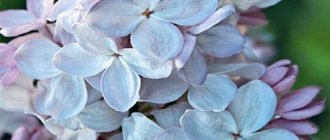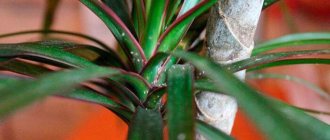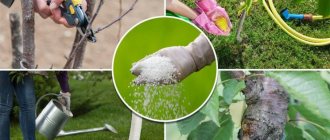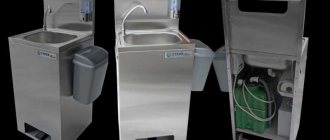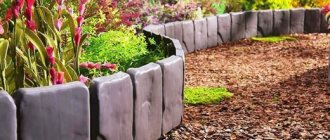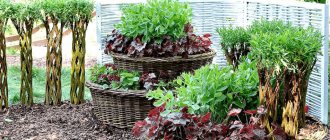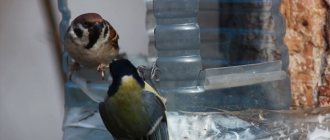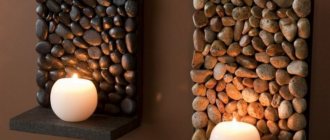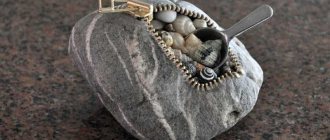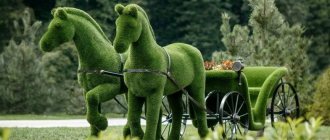A lawn, like any other plant, needs periodic care.
It would seem that, in principle, you can start caring for your lawn in the spring immediately after the snow has melted and the turf has thawed. But it’s not so simple – you still need to give the soil time to dry. The fact is that immediately after the snow thaws, it still remains soft, and even ordinary walking on it can lead to the appearance of unsightly depressions. Rolling:
The first thing you need to do in the spring is roll the lawn. In winter, moisture accumulated under the surface of the top layer of soil often damages the turf. The process of freezing and gradual thawing of the upper layers of soil leads to the appearance of tussocks of grass. As a result, its roots are torn away from the nutritious soil. Rolling the lawn will help solve this problem. Thanks to this procedure, the formed hummocks are reliably pressed to the ground. To roll the lawn, it is best to use a special roller.
Combing: The second stage of care is combing the lawn. Using special lawn or fan rakes, it is necessary to carefully rake the remains of dry grass, as well as leaves remaining from last autumn.
Aerator - a device for saturating the soil with air
An aerator will help at this stage. This tool is designed to saturate the soil layer with air by piercing the soil with thin teeth. In addition, such treatment destroys all germinating weeds and rids the soil of the remains of dead grass. Lawn aeration can be done several times throughout the growing season. The next very important action, which should never be forgotten, is verticutation. Verticutation
involves vertical loosening of the upper part of the turf layer. The purpose of this procedure is to saturate the soil with air, as well as to remove felt - the remains of its old layer. When verticutating, specialists use special devices called verticutters. Using sharp blade blades, they pierce the turf to the desired depth, while simultaneously destroying the lawn's outdated root system (i.e., the felt). As a result of verticutation, conditions for the emergence of new young shoots are improved.
Important information: Rolling, combing and verticutation must be done before the beginning of the growing season, which occurs around the beginning of May.
Feeding:
After combing the lawn is completed, you should start fertilizing with fertilizers. In early spring, in addition to other care activities, you need to give the lawn a small portion of nitrogen fertilizer (at the rate of 1.2 to 1.7 kg of fertilizer per 100 m2). Such actions help speed up the regeneration process and the grass will acquire a bright green color much faster. Fertilizing is carried out manually or using a seeder designed for this purpose.
Important information: For fertilizing, you can use ammonium nitrate, urea, or specially created complex fertilizers for lawns in the spring. They need to be distributed evenly throughout the site.
Watering:
You need to start watering the lawn in your garden plot taking into account the current weather conditions and the associated humidity levels.
Experts recommend doing this in the early morning, because daytime watering, as a rule, leads to poor absorption of liquid by the soil due to its accelerated evaporation and causes minor burns of the green mass (water droplets on the grass act as a lens concentrating the sun's rays at one point)
. Evening watering, especially on a cool and foggy evening due to excessive humidity, can contribute to the occurrence of diseases in your lawn.
Important information: After applying fertilizers to the soil, it is necessary to water it abundantly. After treating the grass with herbicides, on the contrary, watering it is contraindicated.
What should you do in the fall?
In order for the lawn to withstand the cold with minimal damage, it is advisable to properly prepare it in the fall. A complex fertilizer with a high potassium content, which has a long-lasting effect, will help with this. In combination with aeration, it stimulates the growth of the root system, thereby increasing the winter hardiness of the grass carpet. For central Russia, it is advisable to carry out this work on dry, windless days in the second half of October.
It is necessary to remove fungus-infected or rotten grass clippings and fallen leaves from the soil with a rake. Before the onset of cold weather, you should not mow your lawn too short. Very short or too tall grass does not tolerate wintering under snow equally well. The best option is a couple of centimeters higher than usual.
Weed remover
We remind you that weed control should begin at the stage of laying the lawn, and at a minimum, cover the crops of cereal grasses with lutrasil. In the future, some weeds, for example, the ubiquitous dandelions, quinoa, woodlice and others will still show themselves, but in much smaller quantities. Mowing will help control annual weeds. Annuals do not tolerate mowing, while the lawn, on the contrary, becomes stronger from mowing to mowing. But perennials are more difficult to destroy: if even a small piece of rhizome remains in the ground, then the appearance of dandelion, plantain, and hogweed will not take long.
There are two options for controlling weedy perennials: water them with herbicides or pull them out. The latter method is more environmentally friendly, and a telescopic weed remover .
This sharp-toothed device easily penetrates even heavy soils. It is enough to turn it around its axis to easily remove the weed along with the root. The height of the handle is adjustable for maximum comfort. In addition, the weed root remover does not destroy the soil and leaves your hands clean.
The most popular models:
- Gardena weed remover: made in Germany, convenient, functional, reliable, but expensive.
- Fiskars weed remover: reviews for this model are generally good (after all, Finnish quality), however, the blades wear out quite quickly and require sharpening (in case of intensive cutting, replacement).
- Weed remover "Tornado": low price, mediocre quality of cutting parts, some complaints about the assembly. At the time of purchase, you need to check the quality of the fasteners, and in the future be prepared for frequent sharpening of the blades.
IN THE PHOTO: The fiskars weed remover has proven itself well among lovers of clean lawns.
Lawn in winter
In winter, you should not place anything heavy on the lawn. Otherwise, compaction will appear in this place, and when the snow melts, a particularly thick layer of ice may form, which can damage the lawn in this place. The ice that is common in spring is easily destroyed by a rake, but this must be done in a timely manner in order to avoid the death of roots due to lack of oxygen.
The snow should melt evenly over the entire area of the lawn, without puddles forming. In areas where snowy winters are common, drainage should be installed on the site in the fall to avoid flooding. Large snowdrifts should be evenly scattered throughout the area. During this period, it is recommended to walk on the lawn as little as possible, as this can cause damage to the soil cover and the formation of dents. Young lawns with unformed turf are especially susceptible to such damage.
Device overview
Gasoline
Patriot SCG 212
The scarifier is equipped with a four-stroke engine with a volume of 212 cm3 and a power of 7 horsepower. The fuel tank is designed for 3.6 liters. The combined device is equipped with two attachments - one has 18 knives attached, the other has 24 spring claws.
The devices can rise above the ground surface by 5 mm, and can penetrate the ground by 15 mm. A strip 40 cm wide is processed in one pass. The body is made of steel, so the scarifier is suitable for working in difficult conditions. The weight of the device is 38 kg. The diameters of the front and rear wheels are 20 cm, which makes it easy to work on bumpy terrain. Dry grass and natural debris are collected in a 45 liter fabric bag
Husqvarna S-500 pro
A high-performance device with a four-stroke engine of 5.7 horsepower and a volume of 169 cm3 is designed for processing not only decorative lawns, but also sports fields.
The design is adapted for large volumes of professional work over a long period. Fuel tank volume is 3.4 liters. It has a noise level of 82 dB and reduced vibration. The body is made of steel, the weight when fully equipped is 65 kg. The working width in one pass across the lawn is 50 cm. The maximum processing depth is 5 mm.
Stihl RL 540
3 hp engine and a working volume of 150 cm3, it is easy to start in any weather conditions thanks to Smart Choke technology. The impact-resistant case, which has a built-in carrying handle, is made of polymer plastic. The weight of the device is 33 kg. The width of the processed strip is 38 cm. The design provides 6 nozzle adjustments, the greatest processing depth is 25 mm. The wheels have a smooth ride and provide good maneuverability.
Daewoo DSC 4000
The combined scarifier is made in a steel case and is equipped with a 160 cm3 engine with a power of 5 horsepower. The fuel tank holds 1.2 liters of gasoline. The diameters of the front and rear wheels are the same and amount to 20 cm, this makes it easy to overcome obstacles in the form of bumps and uneven surfaces. The weight of the device is 31 kg. Two working attachments (16 knives / 24 spring arms) provide a maximum working height of 5 mm, and cut into the ground 15 mm. One grip strip is 40 cm wide.
Electrical
Bosch ALR-900
The unit is designed to remove last year's grass and trim the top layer from a large area. Garbage is collected in a plastic container with a volume of 50 liters. The waste design easily folds, allowing it to be compactly placed for winter storage in the utility room. The roller is equipped with 10 double teeth, which are made of high quality spring steel.
Spring lawn care chores
The main spring work - rolling, combing, aeration, fertilizing and overseeding begins only after the soil has completely dried out, so that they can be completed before the beginning of the lawn grass growing season.
Rolling
The first thing you need to do in the spring is to roll the lawn with a special roller. This is necessary to level out dents, hummocks, areas swollen when snow thaws, and other irregularities. A homemade or factory-made roller up to 0.7 m wide, 30–40 cm in diameter and weighing 80–120 kg is suitable for this. You need to roll in one direction, preferably in a single pass. In this case, the likelihood of plant damage is much less. This operation, in addition to compacting the soil layer, also strengthens the root system of plants weakened after wintering.
Top dressing
After cold weather, plants urgently need stimulating feeding, especially phosphorus and potassium compounds. When positive air temperatures stabilize, it is necessary to apply a complex fertilizer with a predominant content of phosphorus, nitrogen and various microelements, preferably in composition adapted for a specific type of lawn vegetation. Feeding will allow the grass to quickly resume active vegetation. Fertilizer consumption rates, as a rule, do not exceed 30–50 g per m².
To prevent the grass from “burning” from fertilizers under the influence of solar radiation, they should be scattered evenly and then watered abundantly. You can make a solution and spray it with a sprayer, and then wash off its residue onto the soil with clean water.
Combing (scarification) and aeration
After 8–10 days, when the fertilizer granules have completely dissolved, you should start combing the lawn. Over the winter, a fair amount of dead, rotten grass, fallen leaves, and various debris had accumulated on it. This “cushion” prevents air from penetrating to the roots, prevents excess moisture from evaporating, and prevents young shoots from germinating. It must be removed with a scarifier or verticutter set to combing mode, and in their absence, with a fan or special rake.
You should not try to use rotted grass as fertilizer. It is probably infected with mold fungi, and in the future their rapid development can destroy the lawn. If you really don’t want the good stuff to disappear, it’s better to comb it out, then burn it, and use the ashes as potash fertilizer.
If the lawn was left unmowed in the fall and the grass is higher than 6–8 cm, then before combing it, you should go over it with a trimmer or lawn mower.
Aeration to ensure unhindered access of moisture and air to the rhizomes should be done immediately after scarification. It’s good if you have a rod aerator, but for a small area an ordinary pitchfork will do. The turf must be pierced to a depth of at least 8 cm. A verticutter in aeration mode gives satisfactory results, but it cultivates the soil to a very shallow depth.
Ways to aerate your lawn in spring
Weeds
In the spring they always wake up before the lawn grass, becoming noticeable by the end of April. The simplest method of weed control is mechanical. True, it is quite labor-intensive, so it is effective only on small lawns. The tools you will need for this are a shovel or a root extractor. The roots of the weeds are cut as low as possible and then removed. Russian enterprises do not produce such a tool, but it is available on the market under the RACO or Fiskars brand and some other Western companies.
Fiskars mechanical weed removal tool
Weed remover
The chemical method using continuous or selective herbicides is more effective and is very widely used to control weeds on lawns. Continuous action preparations destroy all vegetation in a row. Such substances include, for example, the infamous Roundup (dosage 50–120 ml per bucket of water). The biochemistry of its influence is such that the drug, penetrating inside the plant, disrupts its metabolism, as a result of which it dies. Therefore, it is necessary to use it, guided by the instructions, preferably pointwise, by spraying or applying the solution with a brush or syringe to weeds.
Selective herbicides work more accurately, destroying only weeds, almost without affecting useful crops. But, despite the ease of use of such preparations, it is advisable to combine this method with weeding. Experts recommend using selective preparations simultaneously with fertilizing.
Selective herbicides “ Lintur ”, “ 2,4D ”, “ Lontrel-300D ” have proven themselves well. For example, Lontrel-300 D works well against lawn weeds such as plantain, chamomile, buckwheat, sorrel, various types of mountaineers, as well as such famous weeds as dandelion and sow thistle. It is a surfactant that is absorbed through the leaves and stem. After the active substance penetrates to the growth point at the rhizomes, the plant stops developing and then dies. The good thing about the drug is that it stays in the soil for quite a long time, preventing all other vegetation from developing normally for 3-4 months, having virtually no effect on grass lawn crops, and is safe for humans, warm-blooded animals and insects.
Herbicides are produced in granular and liquid form. After pollination with powdered reagents, the lawn must be watered after 2-3 days to completely dissolve the granules. Liquid medications work much faster. Naturally, when working with any herbicide, you must avoid contact of the active substance with neighboring crops, which may also be damaged. In addition, do not neglect personal protective equipment, such as gloves and goggles.
Seeding
If, after wintering, significant bald spots appear on the lawn, where natural restoration of the grass carpet is no longer possible, then seeding is absolutely necessary. Of course, it is advisable to sow with the same set of lawn grass, after surface verticulation. To speed up the healing of bald spots, special “repair” mixtures are sometimes used, where an increased amount of fast-growing crops predominates from the same set of seeds, but the grass in this place will be slightly different for some time. Approximate sequence of work:
- the bald spot is loosened with a rake to a depth of 1–1.5 cm;
- the seeds of the herbal mixture are mixed with dried humus in a ratio of 1:2;
- the resulting mass is evenly scattered over the defective area;
- After this, do not water it too much.
In general, all spring work will not take much time. But these days are very important, because they determine what the lawn will be like in the summer.
The first video is a story about caring for a small lawn in the spring at a summer cottage; the second video demonstrates the procedure for spring work on the lawn using special equipment:
Types of scarifiers
Manual
A simple garden device with low performance. They are used to treat small areas, since cleaning with such a tool requires the use of physical force. A mechanical scarifier is a roller on wheels to which metal teeth are attached. For ease of control, the design is equipped with a handle.
Hand tools are seen as a budget option that is easy to repair in case of breakdown. It does not harm the environment, since it does not require the use of fuel for operation. The mechanical device does not consume electrical energy, which makes lawn care a very economical activity.
With petrol engine
Petrol scarifier DAEWOO DSC 4000
This unit is used on a large plot, the size of which exceeds 15 acres. Compared to other types, a gasoline scarifier is more powerful, highly efficient and cleans the lawn in a short time. All these qualities are reflected in the price of the product, but in operation the costs are more than compensated. Manufacturers produce both self-propelled scarifiers and models that move with human effort.
The disadvantages of a gasoline-powered device primarily include the high noise level during operation, which can cause discomfort to the owners of the site and their neighbors. The next inconvenience is regular expenses for fuel and air pollution from exhaust gases. But since lawn scarification is carried out two, maximum three, times a year, such inconveniences can be ignored.
With electric motor
MTD OPTIMA 30 VE
The scarifier operates from the electrical network, to which it is connected using an extension cord. Depending on the length of the cable and the location of the power points, it processes an area of 15-20 acres. The limitation is also associated with moderate engine power and lower performance compared to gasoline counterparts.
Note! There are battery models, the operation of which does not depend on the length of the electrical cable. It is enough to charge the battery, and you can freely move the device around the site.
Cordless aerator Greenworks G40DT30K4, 40V
Electric models have a number of advantages - low noise levels, the absence of unpleasant odors during operation and the implementation of lawn activities without harm to the environment. Such devices do not require much preliminary preparation, are characterized by good maneuverability and are easy to move. The cost of an electric scarifier is lower than that of a gasoline device with similar technical characteristics.
How to choose pitchforks?
When choosing forks, you must first look at their suitability for the worker’s height , because if they are too short, he will have to bend over too much, which will accelerate the onset of fatigue.
If they are too long, then working with them will be difficult in narrow or cramped places.
The correct length is especially important where there is no room for the worker to maneuver, and he has to transfer the collected material while standing on a small area.
What types of rakes are there?
The shape of a rake is similar to a palm with slightly curved fingers (teeth) and they can be divided into the following types :
- straight;
- twisted;
- fan-shaped
Straight teeth are distinguished by their large width and often thickness of teeth, which is why their total area is maximum.
Twisted ones differ from straight ones in that all the teeth are turned at an angle of 90 degrees, due to which, even with large sizes, they have much less impact on vertical elements, but can withstand the heaviest load.
Fan fingers are made of wire, so they have minimal impact on vertical elements , and due to their high density, they are well suited for cleaning thin layers of mown vegetation or consisting of small trimmings.
Where to put the collected green mass?
The grass collected after mowing the lawn consists of water and various polysaccharides (carbohydrates), so it can be used to make :
- humus and compost, including liquid compost in a barrel;
- biogas;
- building materials;
- bedding for animals and birds;
- fuel pellets.
Removing the bumps
If after frosts you can see bumps on the surface of the lawn, they need to be eliminated. Convex spots are formed as a result of poor soil preparation for the lawn. Soil is poured between the hummocks and then rolled. If necessary, seeds are sown.
What is it for?
Rolling the area will help compact the fresh soil. This will promote faster rooting and germination of young shoots. This is done with a special roller.
When should it be done?
You can begin rolling the lawn when the surface of the turf has sufficiently thawed and dried out. This will prevent surface damage.
| ADVICE | Once soiled, lawn edges often look untidy. To create smooth edges, use a shovel-cutter. |
Optional equipment
Additional equipment is necessary for transporting the mown mass to the disposal site , as well as for final cleaning of the area from the remnants of chopped green mass.
For this use:
- self-propelled equipment with a body or trailer;
- garden wheelbarrows;
- various drags or a piece of tarpaulin;
- blowers and vacuum cleaners.
Self-propelled equipment is well suited where a large volume of mown vegetation has to be removed and there is sufficient free space.
Hand wheelbarrows are many times less spacious than a self-propelled trailer, but they can be used even on small footpaths .
Dredgers are ideal where it is necessary to transport collected material across the lawn, causing minimal damage to vegetation. The tarpaulin fabric is used like a drag, that is, cut vegetation is loaded onto it and pulled by a sewn rope to the disposal site.
